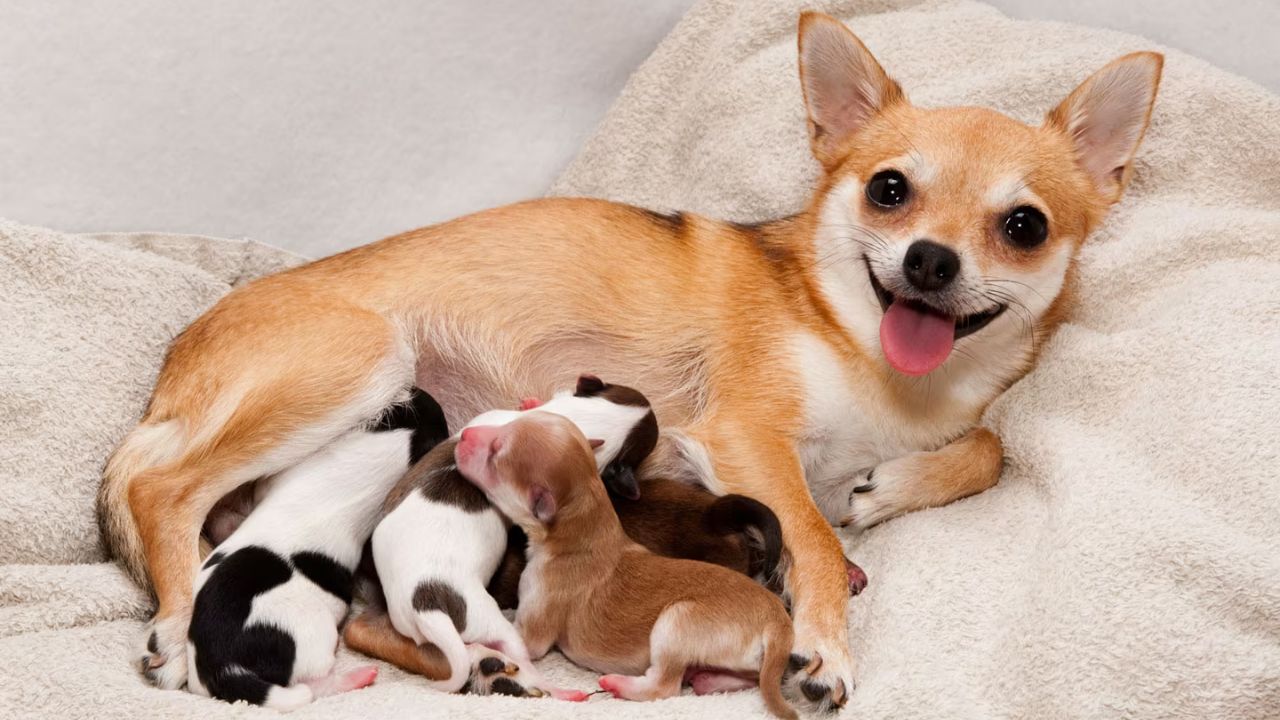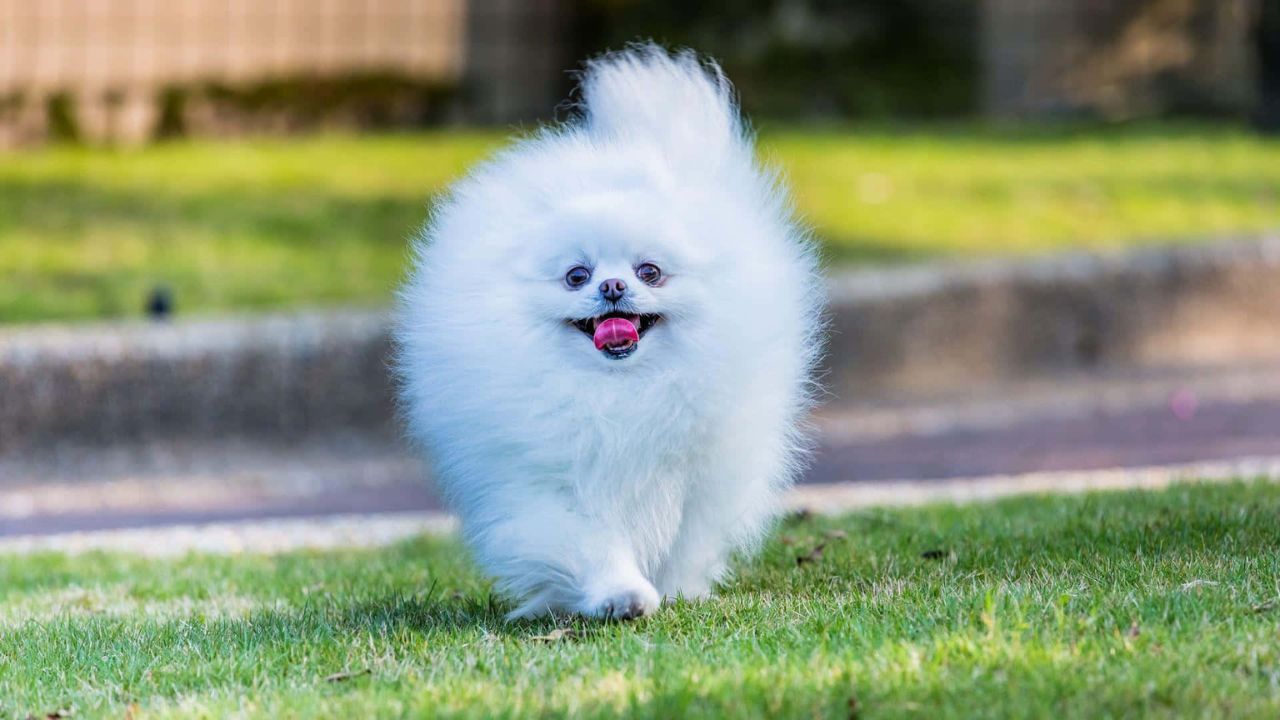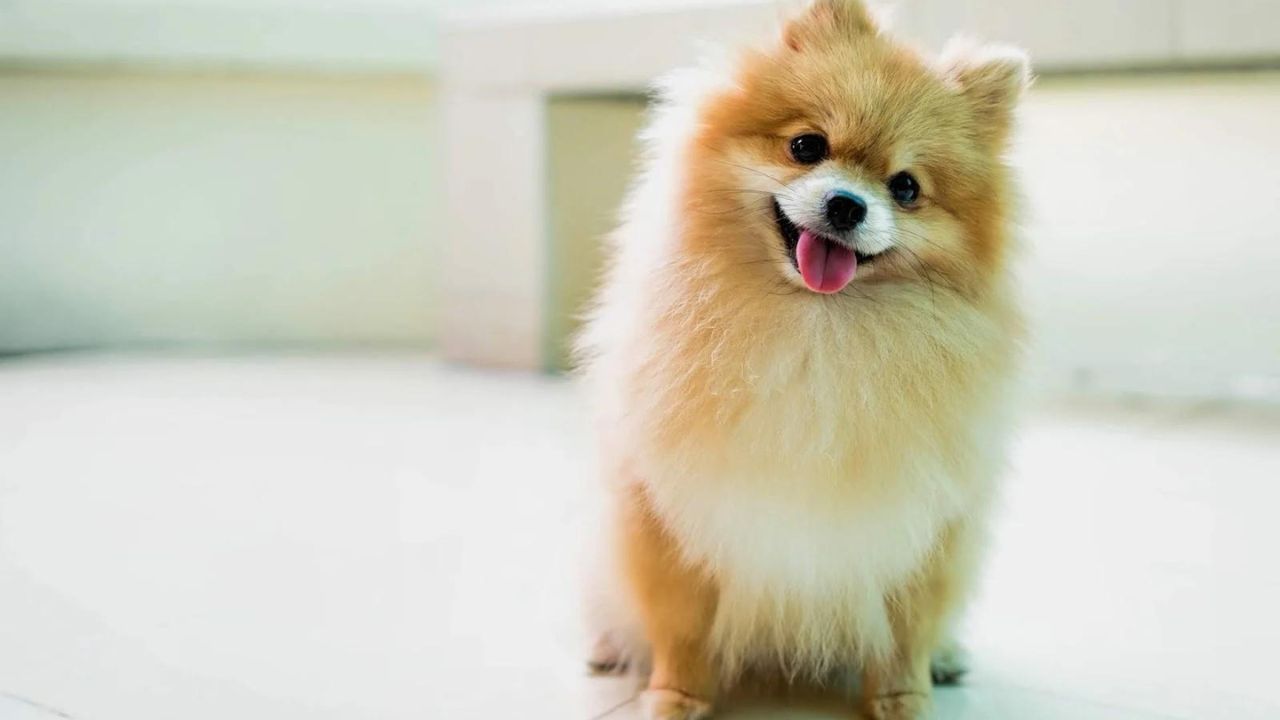Pomeranians, known for their tiny size and fluffy coats, are popular companion dogs worldwide. If you’re considering breeding Pomeranians or have a pregnant Pomeranian, you might be curious about how many puppies they can have. In this article, we will dive into Pomeranian litter sizes and explore various factors that can influence the number of puppies a Pomeranian can have.
Pomeranian Litter Sizes
Pomeranians are generally considered small breed dogs; their litter sizes tend to reflect their size. While there can be some variations, the average litter size for Pomeranians is typically between 1 and 5 puppies. However, it is common for Pomeranians to have smaller or larger litters depending on various factors.
Factors Influencing Pomeranian Litter Sizes
Breed Characteristics: The size of a dog breed can often play a role in determining their litter sizes. Smaller breeds, like Pomeranians, tend to have smaller litter sizes than larger ones.
Genetics: The genetics of a Pomeranian can also impact its litter size. Some Pomeranians may inherit genes predisposing them to larger or smaller litters.
Age and Health of the Dog: The age and overall health of the Pomeranian can affect its ability to conceive and carry a litter. Younger and healthier dogs may have higher chances of having larger litters.
Nutrition and Care: Proper nutrition and care during pregnancy can contribute to the overall health and well-being of the mother dog, which may positively impact the litter size.
Breeding Practices: Breeding practices, such as the timing of mating and the selection of compatible mates, can also influence litter sizes.
Individual Variations: Just like humans, dogs can have individual variations. Some Pomeranians may naturally have larger or smaller litters regardless of other factors.
Commonly Asked Questions about Pomeranian Litter Sizes
Can Pomeranians Have Only One Puppy? Yes, a Pomeranian can have only one puppy. This is not uncommon, especially for smaller breeds.
Can Pomeranians Have More Than Five Puppies? While the average litter size for Pomeranians is between 1 and 5 puppies, they can have larger litters. Some Pomeranians have been known to have six or seven puppies.
Are There Any Risks Associated with Large Litters? Yes, there can be risks associated with large litter. The mother dog may experience difficulties during labour and delivery, and the puppies may have a higher chance of health issues due to overcrowding in the womb.
How Many Puppies Do Pomeranians Have In One Litter?
Although most people believe that a dog’s age has no bearing on how many puppies it can produce, age impacts a dog’s ability to reproduce and determines the size of the litter when breeding.
Because their bodies regenerate more quickly, female Pomeranians over three years old can have larger litters than younger mothers. There will always be instances where older Pomeranian girls do not reproduce as well as younger females with higher fertility rates, even with this rule in place.
It’s no secret that a person’s age greatly influences the size of their children. Nevertheless, whether or not dams are first-time mothers, there is still more to be said about how their ages impact their litters.
Mothers between two and five typically give birth to the most puppies. However, there will always be fewer puppies in the first two litters.
A recent study found that many dog owners don’t realize how much their dog changes during pregnancy; some don’t even realize it until they give birth to multiple puppies. Because dogs have the most puppies during their third and fourth pregnancies, the research indicated that these are typically the largest.
Exploring Pomeranian Pregnancy and Whelping

Pregnancy in Pomeranians typically lasts around 63 days, but it can vary slightly from dog to dog. It is important to provide your pregnant Pomeranian with proper nutrition and care during this period. A balanced diet, regular exercise, and regular veterinarian check-ups are crucial for the health of both the mother and the developing puppies.
As the due date approaches, you’ll want to create a comfortable and safe whelping area for your Pomeranian. It should be cosy, peaceful, and convenient to get to. A whelping box with soft bedding can help the mother dog feel secure and comfortable during labour.
Like many other dogs, Pomeranians go through three labour stages: early labour, active labour, and delivery. Early labour can last up to 24 hours, characterized by restlessness, nesting behaviour, and panting. During this stage, keeping a close eye on your Pomeranian and providing reassurance and support is best.
Active labour is when the actual contractions and delivery occur. This stage can last several hours, and the mother dog may become more vocal and exhibit signs of discomfort. If you notice any prolonged straining without puppies being delivered, it is crucial to contact a veterinarian as there may be complications.
During delivery, each puppy is usually born within 30 minutes to an hour after the start of active labour. The mother dog will instinctively break the amniotic sac and clean the puppies. Occasionally, assistance may be required to remove a sac or clear the airways if the mother is inexperienced or if any complications arise.
After each puppy is born, it is essential to ensure they are breathing, warm, and nursing. The mother dog chews through the umbilical cord and licks the puppy to stimulate breathing and circulation. However, if the mother doesn’t do this, you may need to step in and gently assist.
Puppies should nurse from their mother within a few hours of birth to receive vital colostrum, which provides important antibodies to boost their immune system. If a puppy is not nursing, or you notice any signs of distress or weakness, it is crucial to seek veterinary assistance immediately.
Caring for Pomeranian Puppies
Once the puppies are born, your role as a responsible breeder or pet owner is to provide them with proper care and socialization. Here are some key considerations:
Nutrition: As the puppies grow, they transition from nursing to solid food. Consult your veterinarian for guidance on the appropriate puppy food and feeding schedule. Make sure to provide clean water at all times.
Socialization: To help the puppies grow into well-rounded, self-assured canines and expose them to various sights, sounds, and experiences from a young age. Their development depends on gentle handling, exposure to various settings, and constructive interactions with people and other animals.
Healthcare: Schedule regular veterinary check-ups for the puppies to monitor their growth and ensure they receive necessary vaccinations and deworming treatments. You can get advice on preventing parasites from your veterinarian. Dental care and other aspects of your health.
Finding Loving Homes: If you are a breeder, you must find suitable homes for the puppies. Conduct thorough screening of potential adopters to ensure they can provide a safe and loving environment. Consider providing a written contract and ongoing support to new owners.
Tips for Pomeranian Pregnancy and Whelping
While Pomeranian pregnancy and whelping can be a wonderful experience, it’s important to be prepared and knowledgeable to ensure the health and well-being of both the mother and her puppies. Here are some additional tips to help you navigate this journey:
Pre-natal Care: Before breeding your Pomeranian, it’s crucial to consult with a veterinarian to ensure she is in good health and ready for pregnancy. The vet can thoroughly examine, recommend necessary vaccinations or tests, and provide guidance on proper nutrition and supplements.
Nutrition: During pregnancy, a Pomeranian’s nutritional needs increase. Feed her high-quality dog food specifically formulated for pregnant or nursing dogs. Ensure the food is rich in essential nutrients such as protein, calcium, and folic acid to support healthy fetal development.
Exercise and Rest: While keeping your Pomeranian physically active during pregnancy is important, be mindful not to overexert her. Moderate exercise, such as short walks, can help maintain her muscle tone and overall well-being. However, allow her plenty of rest time as well.
Monitoring Health: Regularly monitor your Pomeranian’s weight gain throughout pregnancy. Sudden weight loss or excessive weight gain could indicate potential problems. Look for any signs of discomfort, difficulty breathing, or decreased appetite, and consult your veterinarian if you have any concerns.
Preparing the Whelping Area:
- Set up a designated area for whelping well before the due date.
- Ensure it is clean, warm, and secure.
- Provide comfortable bedding and ensure it’s easily accessible for the mother and you during the whelping process.
- Have necessary supplies, such as clean towels, gloves, scissors, and a heating pad, readily available.
Educate Yourself: Familiarize yourself with the signs of labour and what to expect during the whelping process. Understanding the stages of labour, proper birthing positions and potential complications can help you respond appropriately and seek veterinary assistance if needed.
Postnatal Care:
- Monitor the mother’s health and well-being once the puppies are born.
- Provide her with nutritious meals and plenty of water to support milk production.
- Keep the whelping area clean and comfortable for the puppies, and ensure they are nursing and gaining weight properly.
Socialization and Training: As the puppies grow, provide them with opportunities for socialization and early training. Expose them to various stimuli, environments, and gentle handling to help them develop into confident and well-adjusted dogs.
Postnatal Care for Pomeranian Puppies

Congratulations on the arrival of your Pomeranian puppies! Now that they’re here, providing them with proper care and attention is important to ensure their healthy growth and development. Here are some postnatal care tips for your Pomeranian puppies:
Bonding and Socialization: Spend quality time bonding with the puppies and allow them to become familiar with a human touch. Gentle handling and positive interactions will help them develop trust and build a strong foundation for future socialization.
Temperature Control: Puppies cannot regulate their body temperature effectively, so it’s crucial to maintain a warm and comfortable environment for them. Keep the whelping area at a temperature between 75-80 degrees Fahrenheit (24-27 degrees Celsius) using a heating pad or heat lamp.
Feeding Schedule: Puppies will rely solely on their mother’s milk for the first few weeks of life. Ensure that each puppy is nursing regularly and getting enough nourishment. If you have any concerns about their weight gain or milk supply, consult your veterinarian for guidance.
Supplemental Feeding: The puppies gradually transition to solid food as they grow. At around three to four weeks of age, start introducing high-quality puppy food softened with warm water. Begin by offering small amounts in a shallow dish and gradually increase the portion size as they become accustomed to eating solids.
Health Check-ups: Schedule regular veterinary check-ups for the puppies to monitor their overall health and receive necessary vaccinations and deworming treatments. Your veterinarian can also provide guidance on parasite prevention, dental care, and any specific health concerns related to the Pomeranian breed.
Stimulation and Exercise: Puppies need plenty of mental and physical stimulation to support their development. Please provide them with safe toys, interactive playtime, and short periods of supervised exploration outside the whelping area. Be cautious not to overexert them, as they are still growing.
Continued Socialization: Gradually introduce the puppies to new experiences, sights, sounds, and different people to enhance their socialization skills. This will help them become well-rounded and confident adult dogs. Positive interactions with other animals, such as well-vaccinated and friendly dogs, can also be beneficial.
Finding Forever Homes: If you plan to keep only some puppies, finding suitable and loving homes for them is essential. Screen potential adopters carefully to ensure they can provide a safe and nurturing environment. Consider providing information about the puppies’ personalities, health history, and specific care instructions to help new owners transition smoothly.
Conclusion
Pomeranian litter sizes typically range from 1 to 5 puppies, with variations depending on factors such as genetics, age, health, nutrition, and breeding practices. It’s important to remember that each Pomeranian is unique, and individual variations can occur. If you have a pregnant Pomeranian or are considering breeding, it’s essential to consult with a veterinarian for proper care and guidance throughout the process.
FAQ
How Many Puppies Does a Pomeranian Have?
1 to 3 puppies is the average litter size for a toy breed Pomeranian. Poms aged 2 to 5 years old tend to help the largest number of puppies. Poms within this age bracket can produce a litter of 5. In rare cases, some can produce up to 6 pups. Regardless of age, the first and second litters will always be fewer than the following.
When Should a Female Pomeranian Have Puppies?
Pomeranians’ third and fourth litters are frequently the biggest and contain the most puppies. Breeding a female Pomeranian who is older than eight years old is not advised. When a dog reaches about five years old, it’s best to assess her individually to determine when she should stop producing puppies.
Do Pomeranians Need a C-section?
To make the best birth plan, knowing how big a Pomeranian litter will be is important. Many Pomeranians indeed need a C-section for a safe delivery. The size of the litter may vary depending on the mother’s age. Dogs too young or mature to breed typically produce fewer litters than dogs at the ideal breeding age.
How many puppies can a Pomeranian have?
In a litter, Pomeranians can have between 1 to 5 pups. The normal gestation period is about 63 days, but between 55 and 70 days is considered normal.
How Do You Know the Size of a Pomeranian Liter?
A vet’s ultrasound or X-ray is the most reliable and accurate method of determining the size of a litter. Twenty and thirty days of gestation is the best time to do an ultrasound. To make the best birth plan, knowing how big a Pomeranian litter will be is important.

